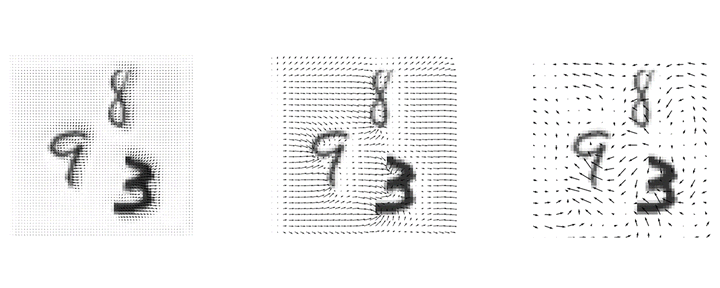 Learned connection structure of different layers in the TrajGRU model.
Learned connection structure of different layers in the TrajGRU model.Abstract
With the goal of making high-resolution forecasts of regional rainfall, precipitation nowcasting has become an important and fundamental technology underlying various public services ranging from rainstorm warnings to flight safety. Recently, the Convolutional LSTM (ConvLSTM) model has been shown to outperform traditional optical flow based methods for precipitation nowcasting, suggesting that deep learning models have a huge potential for solving the problem. However, the convolutional recurrence structure in ConvLSTM-based models is location-invariant while natural motion and transformation (e.g., rotation) are location-variant in general. Furthermore, since deep-learning-based precipitation nowcasting is a newly emerging area, clear evaluation protocols have not yet been established. To address these problems, we propose both a new model and a benchmark for precipitation nowcasting. Specifically, we go beyond ConvLSTM and propose the Trajectory GRU (TrajGRU) model that can actively learn the location-variant structure for recurrent connections. Besides, we provide a benchmark that includes a real-world large-scale dataset from the Hong Kong Observatory, a new training loss, and a comprehensive evaluation protocol to facilitate future research and gauge the state of the art.